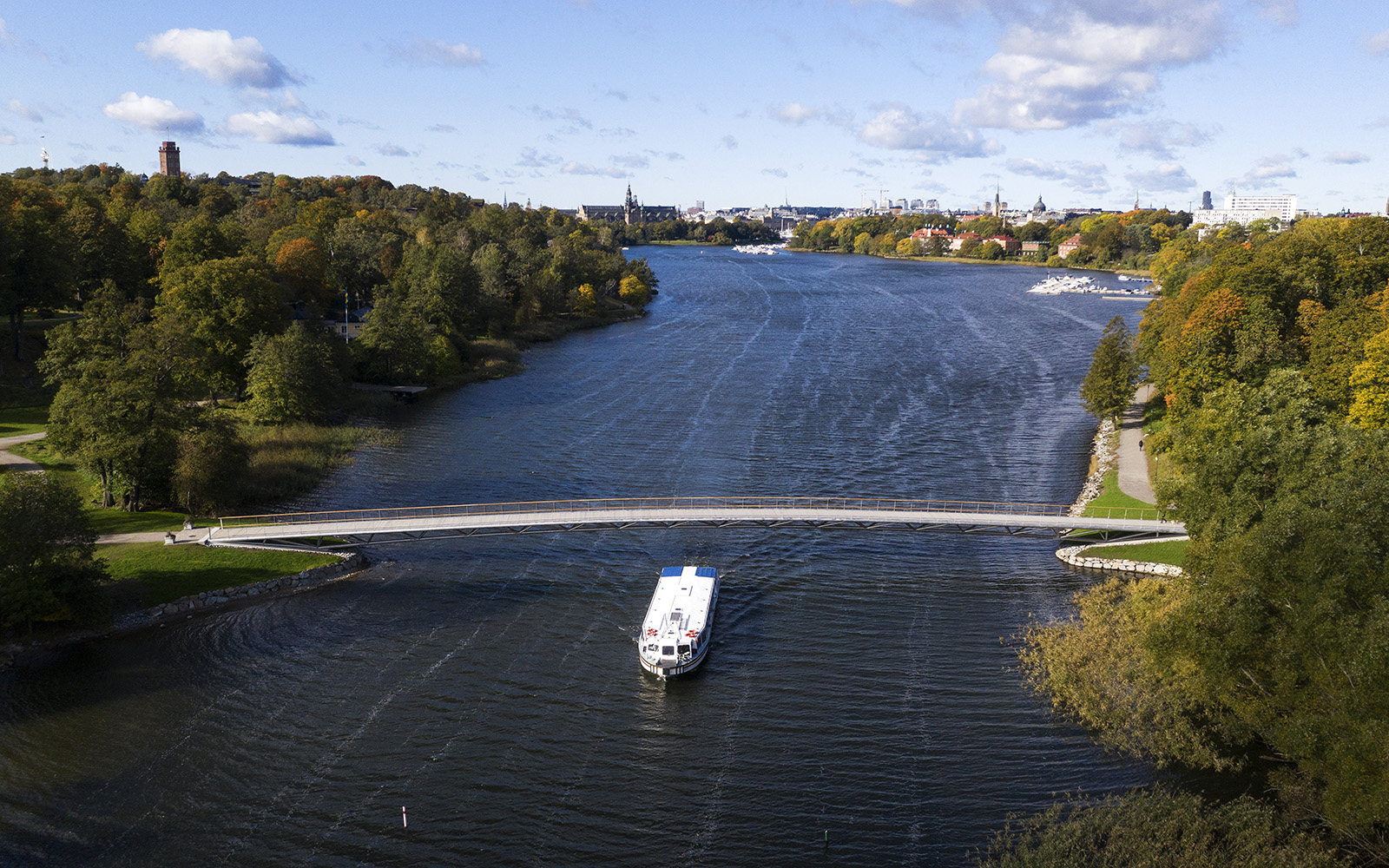

Folke Bernadotte bridge is an important walking connection over Djurgårdsbrunnsviken, joining the northern and southern part of Djurgården, between the Museum Park and Rosendals castle. As early as 2004, The Royal Djurgården Administration took the initiative to investigate the opportunities for a bridge in this location where Karl XIV Johans floating bridge (1820-1846) and a temporary pedestrian bridge that was built for the Stockholm exhibition (1930) have historically been positioned.
The south part of Djurgården is one of Stockholm’s most popular areas and the most visited within the Royal National City Park. Both locals and tourists go there to experience the nature and the various cultural sights. Stockholm is increasingly growing, necessitating increased access to green areas. Today, the accessibility to the generous nature area in the south part of Djurgården is limited and unequally distributed. A new connection over Djurgårdsbrunnsviken will enable people to easily reach the south part of Djurgården without depending on taking the car or bus.
The design of the bridge grew out of a careful analysis of the site and surrounding landscape, the movement patterns on site and the historical context. The main idea was to span over the entire bay in a single leap, without making a large and tall construction in the delicate historical landscape. This could be achieved through a three-span, vaulted beam bridge, where the end spans are very short and the middle span extends over the entire width of the water. In accordance with maritime traffic requirements, the bridge has 3 meters sail-free height, same as the adjacent bridges.
Supports and abutments are in concrete and hidden under the ground, making the bridge look like a single arch over the water. The beam structure is designed as a truss of stainless steel that provides transparency and lightness in its expression. The construction type is modern and effective, but it also makes a reference to the older bridges in vicinity, which with their truss constructions from the 19th century were the ‘high tech’ of their time.
Folke Bernadotte bridge is an important walking connection over Djurgårdsbrunnsviken, joining the northern and southern part of Djurgården, between the Museum Park and Rosendals castle. As early as 2004, The Royal Djurgården Administration took the initiative to investigate the opportunities for a bridge in this location where Karl XIV Johans floating bridge (1820-1846) and a temporary pedestrian bridge that was built for the Stockholm exhibition (1930) have historically been positioned.
The south part of Djurgården is one of Stockholm’s most popular areas and the most visited within the Royal National City Park. Both locals and tourists go there to experience the nature and the various cultural sights. Stockholm is increasingly growing, necessitating increased access to green areas. Today, the accessibility to the generous nature area in the south part of Djurgården is limited and unequally distributed. A new connection over Djurgårdsbrunnsviken will enable people to easily reach the south part of Djurgården without depending on taking the car or bus.
The design of the bridge grew out of a careful analysis of the site and surrounding landscape, the movement patterns on site and the historical context. The main idea was to span over the entire bay in a single leap, without making a large and tall construction in the delicate historical landscape. This could be achieved through a three-span, vaulted beam bridge, where the end spans are very short and the middle span extends over the entire width of the water. In accordance with maritime traffic requirements, the bridge has 3 meters sail-free height, same as the adjacent bridges.
Supports and abutments are in concrete and hidden under the ground, making the bridge look like a single arch over the water. The beam structure is designed as a truss of stainless steel that provides transparency and lightness in its expression. The construction type is modern and effective, but it also makes a reference to the older bridges in vicinity, which with their truss constructions from the 19th century were the ‘high tech’ of their time.